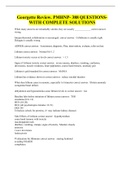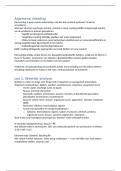Samenvatting
Summary Begrippen / Terminology An Introduction to Brain and Behavior, ISBN: 9781319243562 Neuropsychology (SOW-PWB2240)
- Instelling
- Radboud Universiteit Nijmegen (RU)
Alle begrippen uit de verplichte hoofdstukken van het boek 'An Introduction to Brain and Behavior' van Kolb, B., Whishaw, I. & Teskey G.C.
[Meer zien]










